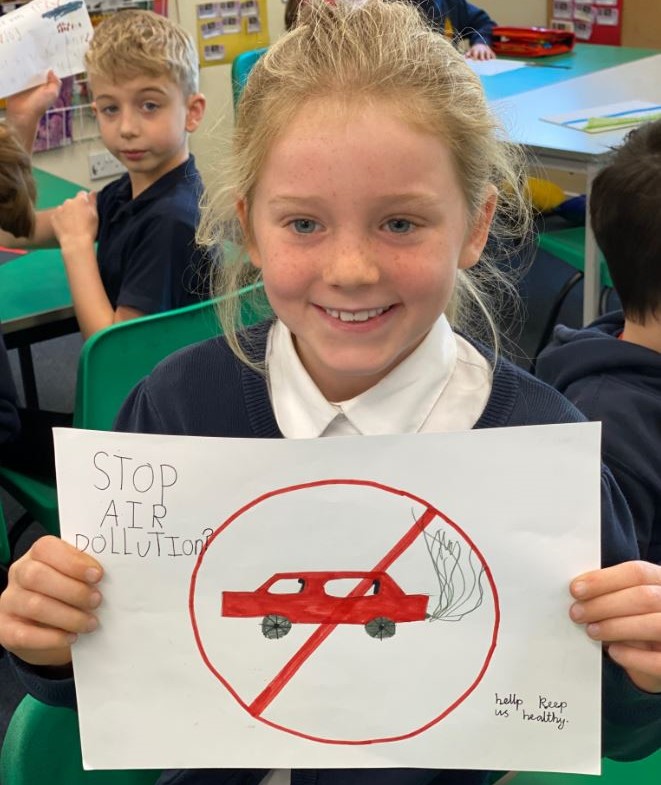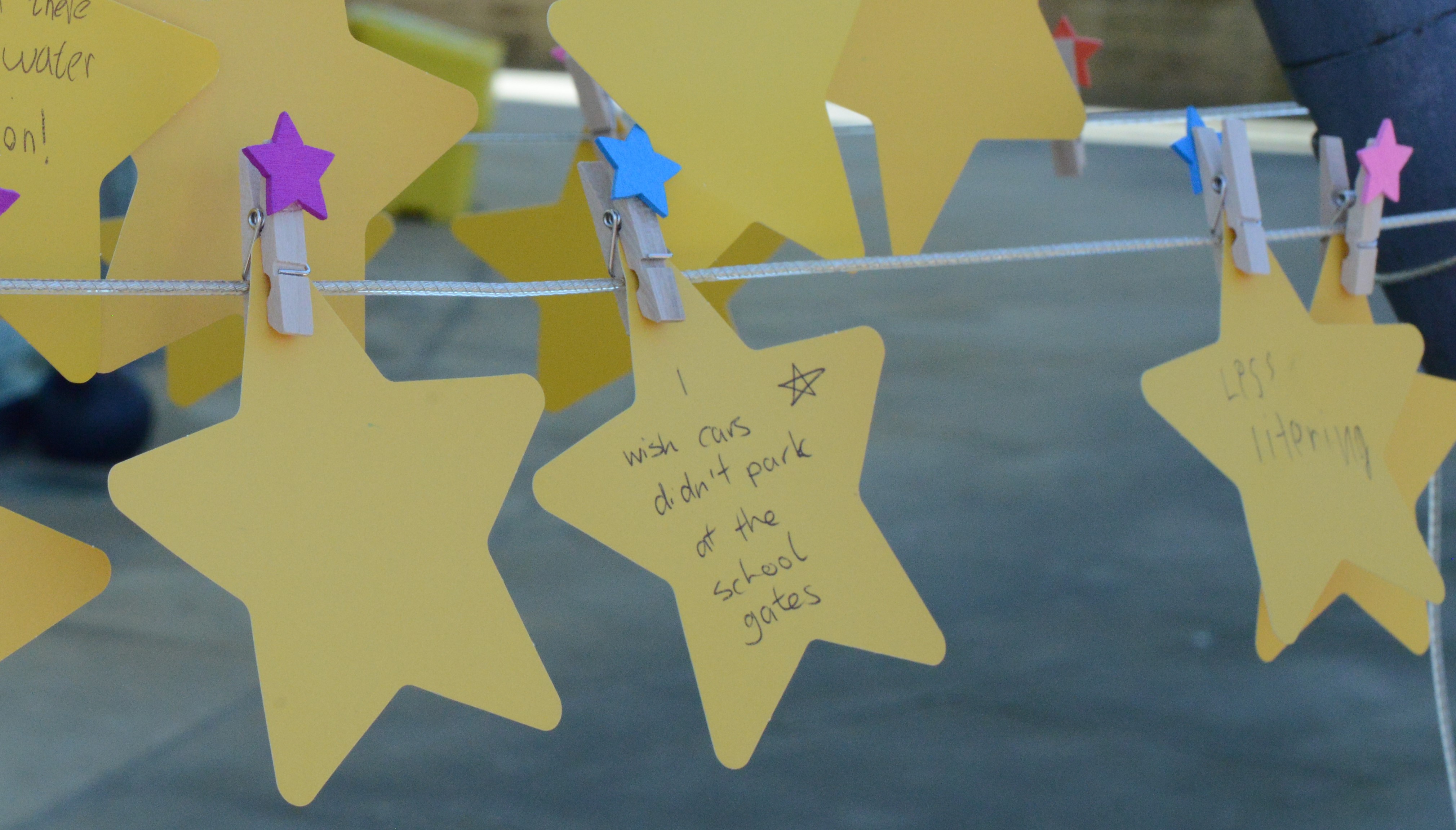Schools take action on air pollution for Clean Air Day
Too many children and families are put off walking and wheeling by pollution and congestion on our streets. For Clean Air Day, Living Streets Project Coordinator Sascha Robinson tells us how she's inspired by the passion and activism of pupils she works with to tackle air pollution around their schools and homes.
Over the past few weeks, I’ve had the privilege of leading air pollution assemblies at several schools across Shropshire and Telford as part of our ongoing work at Living Streets. These visits have been a brilliant opportunity to hear directly from young people about their thoughts on cars, pollution, and how it affects them on their daily journeys to and from school.
In these assemblies, children were able to learn more about air pollution. What it really is and why it affects them as well as consider what their walking environments would be like with fewer cars. A recurring theme was engine idling, often seen outside schools when parents are waiting for drop off or pick up. Children learnt that idling can waste up to twice as much fuel and produce up to twice the emissions compared to a moving vehicle. Despite its clear environmental and financial costs, idling remains a widespread, often overlooked habit.
According to the State of Global Air Report 2024, air pollution accounted for 8.1 million deaths globally in 2021 and was identified as the second leading risk factor for death worldwide, particularly affecting children under five. UNICEF UK estimates that one in three children in the UK is growing up in areas with unsafe levels of particulate pollution - a pollution given off from roads, car tyres and breaks - making schools key battlegrounds for clean air.
Whilst it’s a difficult issue to tackle, there’s reason to be hopeful.
At WOW school, Pye Bank Primary, in Sheffield pupils took a stand for Clean Air Day in 2024. With the support of Modeshift and Living Streets, children created placards, flags, and banners with clean air messages. Around 30–40 pupils marched from the school to Burngreave high street, chanting and waving their creations at passing motorists and pedestrians. The event—lively and unmissable—sent a clear message: young people care deeply about the air they breathe.
Their activism didn’t stop there. Several months later, the school launched its own School Street, closing the road outside the entrance for an hour in the morning and afternoon. Despite challenging weather conditions throughout spring, the initiative has already improved rates of active travel, showing just how effective localised, school-led action can be.

Want to find out more about Living Streets' work with schools?

These examples, from Shropshire to Sheffield, highlight the role schools and students can play in creating cleaner, healthier communities. And sometimes, it’s the simplest messages that have the biggest impact.
The posters created by pupils during our assemblies and clean air events speak volumes. Their clarity and creativity are a reminder that children often cut through the noise better than adults ever could.
As Picasso once said, "It took me four years to paint like Raphael, but a lifetime to paint like a child." At Living Streets, we are here for it, we love to see children are taking action to make a big change where they are.
